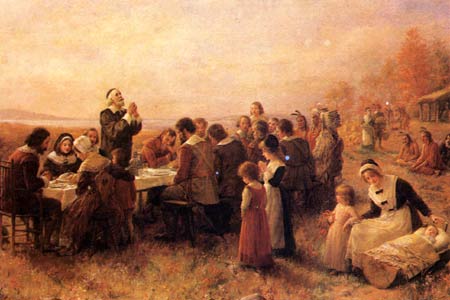[1]R. W. Scribner, The German Reformation (London,1986) p. 19. Scribner gives approximate figures in which he suggests that out of an estimated population of 16 million, the reading public comprised of no more than 400, 000 individuals.
[2]R. W. Scribner, The German Reformation (London, 1986) p. 20. Scribner writes that of the 300,000 copies of Luther’s works published in this time period, assuming that no one bought more than one, and that some copies were passed around, only one person in forty three would have encountered Luther’s ideas in this way.
[3] R. W. Scribner, The German Reformation, (London,1986) p. 20.
[4] A. Johnston, The Protestant Reformation in Europe, (Harlow, 1991) p. 31. Johnston’s research is mainly focused on German urban society where literacy levels may have been higher but again relatively low with regards to the whole population.
[5] A. Johnston, The Protestant Reformation in Europe, (Harlow, 1991) p. 31.
[6] R. W. Scribner, The German Reformation, (London,1986) p. 19.
[7] H. Kamen, European Society 1500-1700, (London, 1984) p. 195.
[8] R. Bonney, The European Dynastic States 1494-1660, (Oxford, 1991) p. 37. Bonney writes that over a third of 176 evangelical preachers active in Germany between 1520 and 1560 had studied at the University of Wittenberg and thus had fallen to a greater or lesser extent under Luther’s influence.
[9] A. Johnston, The Protestant Reformation in Europe, (Harlow, 1991) p. 31.
[10] A. Johnston, The Protestant Reformation in Europe, (Harlow, 1991) p. 31.
[11] R. Bonney, The European Dynastic States 1494-1660, (Oxford, 1991) p. 35.
[12] H. G. Koenigsberger, George. L. Mosse, G. Q. Bowler, Europe in the Sixteenth Century, 2nd edition, (New York, 1989) p. 128.
[13] R. Scribner, The German Reformation, (London, 1986) p. 21. By way of example Scribner informs us that in Leipzig in 1523, Sebastian Froeschel was prevented from preaching in St John’s church because the doors were locked, so his supporters set up a pulpit for him in the churchyard. Also, in 1522 a schoolmaster by the name of Johannes Zymler preached from a window of his schoolhouse to a crowd which had gathered outside.
[14] R. Scribner, The German Reformation, (London, 1986) p. 21.
[15] H. Kamen, European Society 1500-1700, (London, 1984) p. 209.
[16] R. W. Scribner in The Reformation in National Context, chapter 1-Germany, p. 16,edited by Bob Scribner, Roy Porter and Mikulas Teich, (Cambridge University Press, Cambridge) 1994.
[17] R. W. Scribner, Oral Culture and the Diffusion of Reformation Ideas in R. W. Scribner, Popular Culture and Popular Movements in Reformation Germany, p. 55.
[18] R. Bonney, The European Dynastic States 1494-1660, (Oxford, 1991) p. 31.
[19] R. W. Scribner, Oral Culture and the Diffusion of Reformation Ideas in R. W. Scribner, Popular Culture and Popular Movements in Reformation Germany, p. 55. Scribner does however admit that such meetings were probably more ‘ad hoc’ and unstructured than his term ‘discussion circles’ implies.
[20] R. W. Scribner, Oral Culture and the Diffusion of Reformation Ideas in R. W. Scribner, Popular Culture and Popular Movements in Reformation Germany, p. 55.
[21] R. W. Scribner, Oral Culture and the Diffusion of Reformation Ideas in R. W. Scribner, Popular Culture and Popular Movements in Reformation Germany, p. 57.
[22] R. W. Scribner, Oral Culture and the Diffusion of Reformation Ideas in R. W. Scribner, Popular Culture and Popular Movements in Reformation Germany, p. 51.
[23] R. W. Scribner, Oral Culture and the Diffusion of Reformation Ideas in R. W. Scribner, Popular Culture and Popular Movements in Reformation Germany, p. 64.
[24] R. W. Scribner, Oral Culture and the Diffusion of Reformation Ideas in R. W. Scribner, Popular Culture and Popular Movements in Reformation Germany, p. 64.
[25] S. Ozment, Protestants-The Birth of a Revolution, (London, 1993) p. 46.
[26] R. W. Scribner, Oral Culture and the Diffusion of Reformation Ideas in R. W. Scribner, Popular Culture and Popular Movements in Reformation Germany, p. 69.
[27] H. Kamen, European Society 1500-1700, (London, 1984) p. 198.
[28] R. W. Scribner, Oral Culture and the Diffusion of Reformation Ideas in R. W. Scribner, Popular Culture and Popular Movements in Reformation Germany, p. 68.
[29] S. Ozment, Protestants-The Birth of a Revolution, (London, 1993) p. 46.
[30] R. W. Scribner, Oral Culture and the Diffusion of Reformation Ideas in R. W. Scribner, Popular Culture and Popular Movements in Reformation Germany, p. 52.
[31] R. Scribner, The German Reformation, (London, 1986) p. 24.
[32] E. Cameron, The European Reformation, (Oxford, 1991) p. 110.



